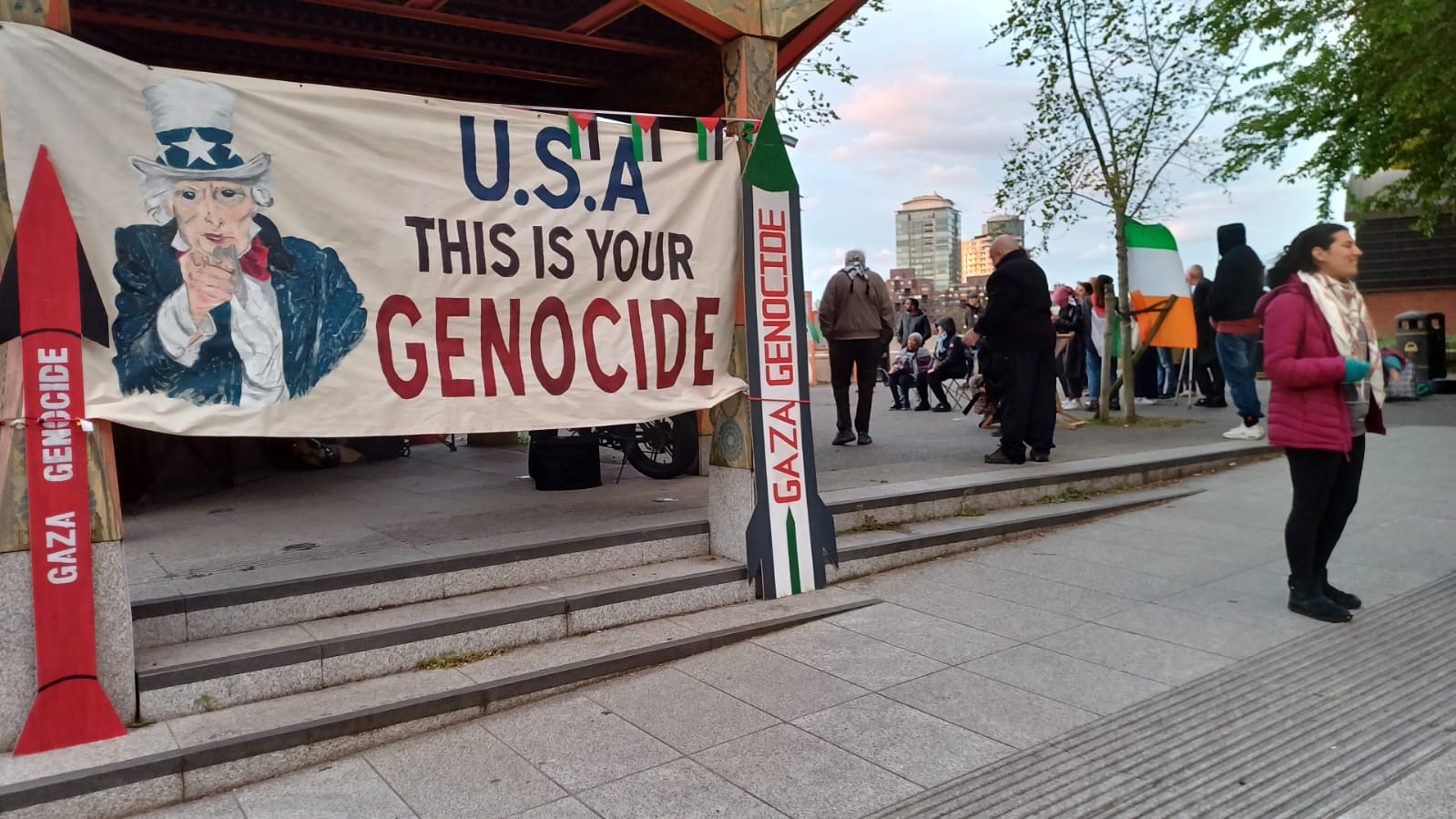In the discussion after the presentation at the Anarchist Communist Group hosted Land and Liberty meeting at the London Radical Bookfair on Saturday 2nd June 2018, a question was raised by one of the attendees about the expropriation of land. Essentially, their concern was – would it be a violent process and if so, would it just end up replacing one hierarchy with another? I made a contribution in response to this, highlighting three different examples of land appropriation, all non-violent and each in their own way playing their part in starting to build a new world in the decaying shell of the dystopian one we currently endure.
Two of the examples are on the estates Basildon & Southend Housing Action (BASHA) and the Vange Hill Community Group (VHCG) respectively have a presence on. BASHA have a long established kitchen garden on an estate in Laindon up by the A127 where one of their activists lives. This garden provides a supply of vegetables for a number of households in one of the blocks. On a deprived estate that’s a long walk from even a basic, bog standard convenience store let alone a decent greengrocers, a kitchen garden like this makes a difference. Okay, it doesn’t guarantee anything like self sufficiency but it’s a welcome supplement to the diet. Basildon Council, failing to see the good a community run kitchen garden could do on a deprived estate, threatened to dismantle the garden a couple of years ago. Well after a fair amount of adverse publicity, the council were persuaded to see the errors of their ways and took the sensible decision to allow the kitchen garden to continue.

The Vange Hill estate on the southern fringes of Basildon had up until last summer been suffering years of neglect. After an estate walkabout last summer, with some facilitation from BASHA, the VHCG was formed. This year on three different sites across the estate, residents have taken it upon themselves to start tidying up neglected public areas with some guerilla gardening. The idea is that these three sites will serve as an inspiration to residents in other areas of the estate to start doing the same. Eventually the idea is link up these ‘areas of enhancement’ and present Basildon Council, Essex County Council and the housing associations who operate on the estate with resident controlled and run public spaces. There is actually a long term vision for the estate we’ve worked on which VHCG have brought into: A better future for the ¾ estate in Vange.

Both of the above examples involve using public space on the estates. Space which is technically owned by either Basildon Council or Essex County Council. Space which due to ongoing austerity, receives minimal maintenance from either authority. This is public space surrounding people’s homes and as such is a community asset. If land is used as a community asset, then the technical and legal issues of actual ownership can be set aside because morally, that land belongs to the community. With both the examples cited above, the residents concerned, seeing the years of neglect from the authorities concerned, didn’t trouble themselves with legal issues of ownership – they simply got on with doing what they saw fit to the land to enhance the conditions on their estates. In the process of doing this, residents are slowly becoming more empowered and more ambitious in their ideas for what they can do to not only improve but also get more control over their estates.
There’s another example which unlike the informal, below the radar expropriation dealt with above, turned into an officially sanctioned project where residents were given control. The example in question is Hardie Park in Stanford-le-Hope. Back in 2007 and 2008 when I contested the Stanford East & Corringham Town ward for the Independent Working Class Association, the then dire state of Hardie Park was frequently raised on the doorstep. Back then, it was a bleak, litter strewn no go area that few people visited. Fast forward a few years and a few local residents, fed up with the neglect of the park by Thurrock Council, took it up on themselves to do something about it.
They started out with some simple, doable tasks such as litter picking. Basically, it snowballed from there and eventually, the residents formed Friends of Hardie Park and were organising community activities in the park. Things really started to gain momentum when they obtained a portable building, dug the foundations, started to erect it, got round to asking the council for permission and ended up with a building that now functions as a cafe, meeting place and community hub. There’s a gardening group we volunteer with who develop and maintain the gardens in the park. What was a no go area ten years ago is now a well used and much loved community asset run by volunteers from the community.

Obviously, with all of the physical infrastructure of the community hub, the gardens and the park, and the maintenance they all need, this costs money. While local authorities may be strapped for cash as a result of central government imposed austerity, as the Friends of Hardie Park are registered as a charity, they can access pots of money in the form of grants. Also, local companies have been willing to donate materials that are needed for gardening and building projects in the park. Yes, all of this is working in and with the system. Some anarchists purists might choose to turn their nose up at this. The point is that at the end of the day, a group of residents have worked the system to their advantage to create a community asset that the town has enthusiastically embraced. As far as we’re concerned, this is a quiet revolution that has empowered and inspired a lot of people and has made a real difference to life in Stanford-le-Hope.
The examples cited above are all ways of expropriating pieces of land and re-purposing them as community assets. They’re ways of doing it under the radar or exploiting the system from within. In all three cases, residents are in the process of or have expropriated land in creative, non-violent ways. They’re filling or have filled the vacuums left behind by local authorities crippled by austerity. Filling these vacuums means that one way or another, residents are taking or have taken control. What is significant is that this is happening in the here and now. People aren’t waiting for the big day to seize control – in a quiet way, they’re already doing that. They most likely don’t realise it but they are already anarchists…
~Dave (the editor, Alternative Estuary)
This text was first published at Alternative Estuary blog.








